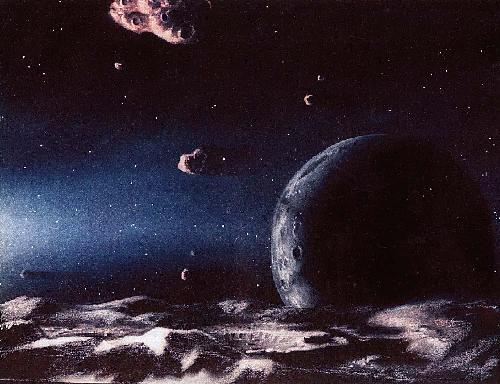 |
 |
||
| Comet | Jewitt | Kuiper | Irregular Satellites |
|---|
| PLUTOIDS, RUTOIDS, SCHMUTOIDS |
|---|
A NEW LABEL
Members of the International Astronomical Union put a lot of work into deciding the names of things in the Solar system. On 2008 June 11 they made a press release announcing that Pluto is in fact a 'Plutoid', meaning that it is a body whose shape is controlled by its own gravity, located beyond Neptune, small enough that it has 'not cleared the neighborhood around its own orbit'.
Here is the IAU definition of Plutoid or see IAU's pdf file. The new label doesn't matter scientifically and most working scientists won't care much about this. So-called 'Plutoids' are just big KBOs, not really in need of a separate designation. But the 'Plutoid' label represents a welcome attempt by the IAU to close off the equally irrelevant (and politically motivated) Is Pluto A Planet? discussion from 2006. I hope that they succeed.
Other Names Proposed for Large KBOs
Planets
Background - 'planet' gets more press attention than 'large Kuiper belt object' and so this has proved popular with some. The practice started in 1930 with Pluto (initially out of ignorance) but has continued in recent times.
Status: effectively dead, even with most school children and astrologers, formerly said to be some of its strongest proponents.
Plutons
Background - suggested
by the IAU before they realized that this is a well-established geological term
for an intrusive rock mass.
Status: abandoned, in deference to angry geologists.
Dwarf Planets
Background - the IAU's
half-way suggestion. Not a real planet, but still has 'planet' in the name,
like 'minor planets' (a.k.a asteroids).
Status: sometimes used, but tells you nothing.
SUMMARY
Big KBOs are best called...Big KBOs.
Fussing about with other names may have value to some, but it is not scientific value. The important thing is to see these objects in their proper (Kuiper belt) context and giving them special names doesn't help to do that.
 |
 |
||
| Comet | Jewitt | Kuiper | Irregular Satellites |
|---|